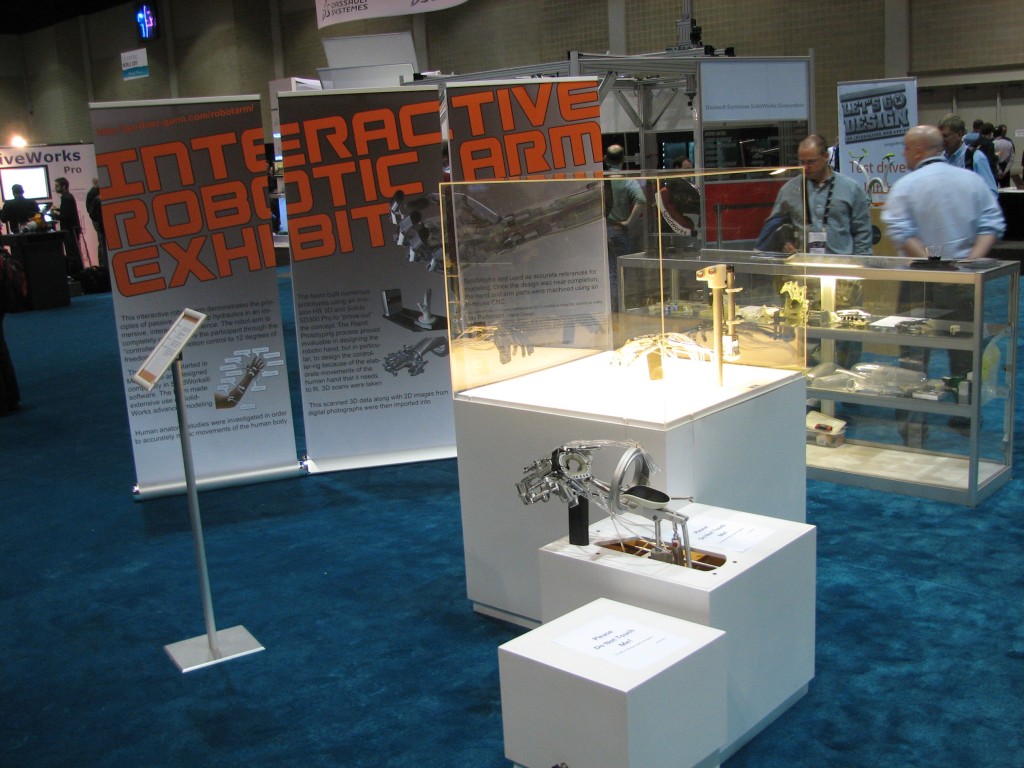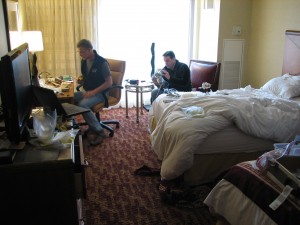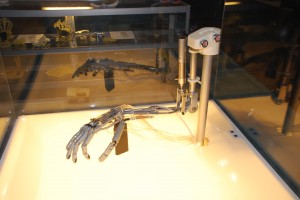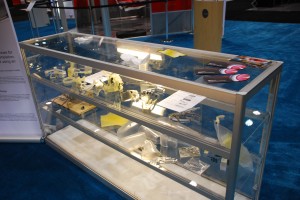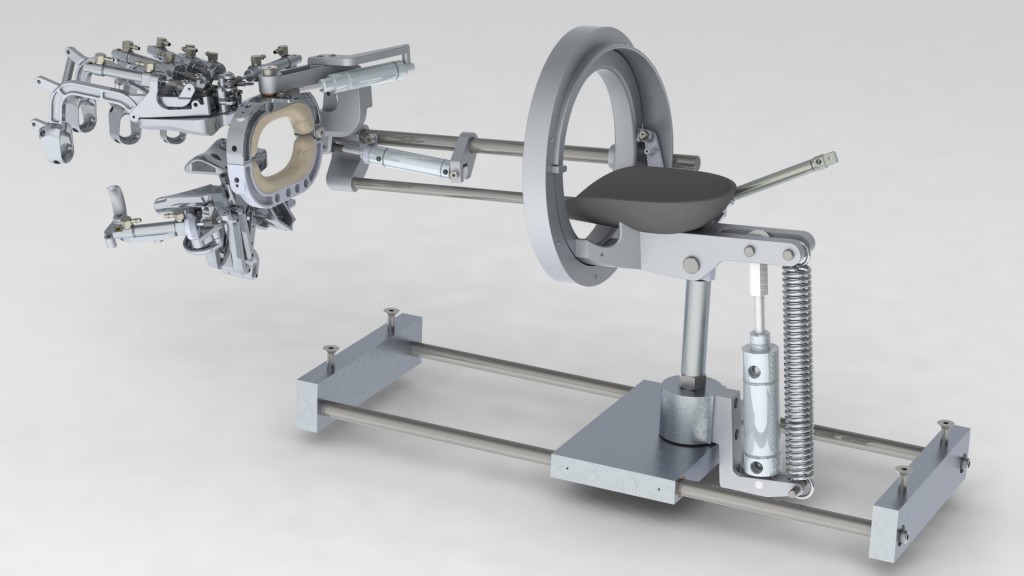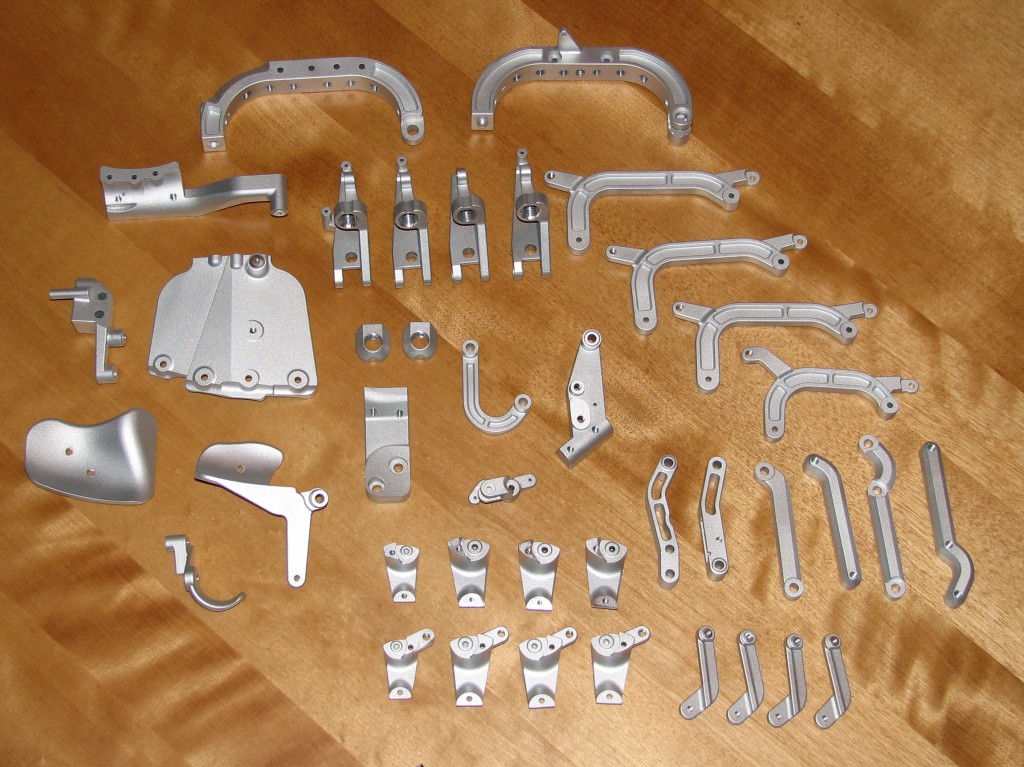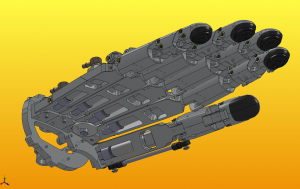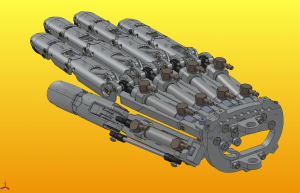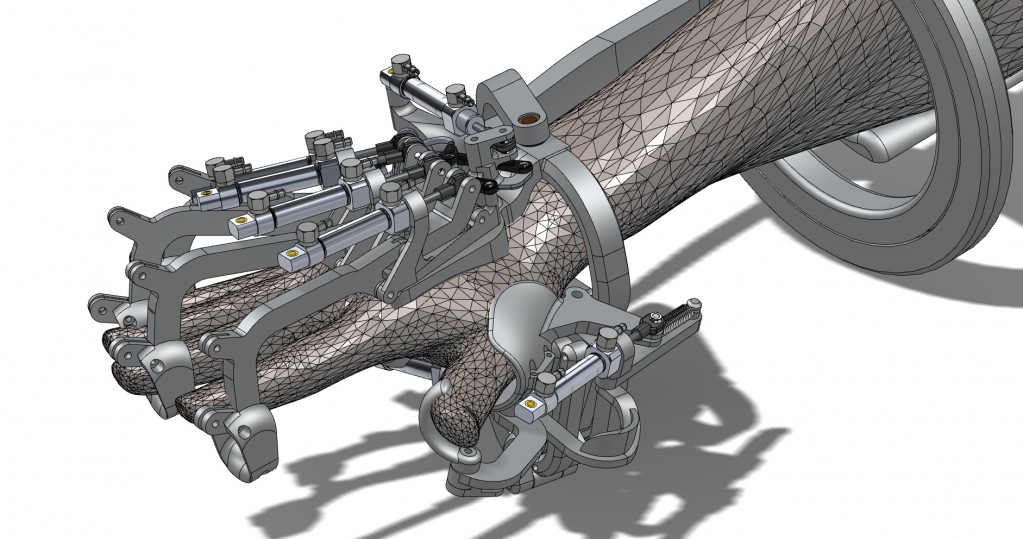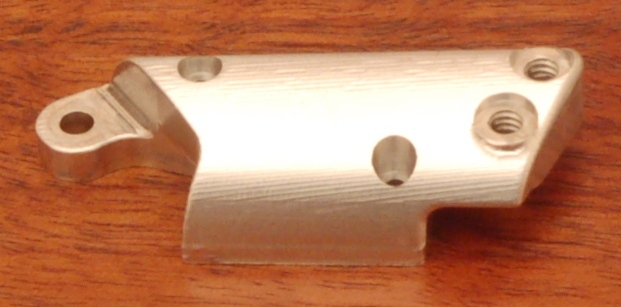A few pictures of the hand itself:
Hand Detail Pictures
Mar 30
Well, we finally came down to the wire last week were we were to make a show of all our hard work over the last several months. Mark G, Julie, Jay and myself worked feverishly, and pull a few all-nighters the week before, trying to finish everything before flying to San Antonio. Unfortunately, need did not finish. We did show what we had accomplished up to that Sunday – even working in my hotel room hours before the reception that evening. Below are some picture take Sunday and Monday, January 23rd and 24th at SolidWorksWorld in San Antonio Texas. To spite the fact that the exhibit was not interactive, Visitors to the conference none the less were fascinated by what we showed and anticipating our completion for SWW 2011 in San Diego CA.
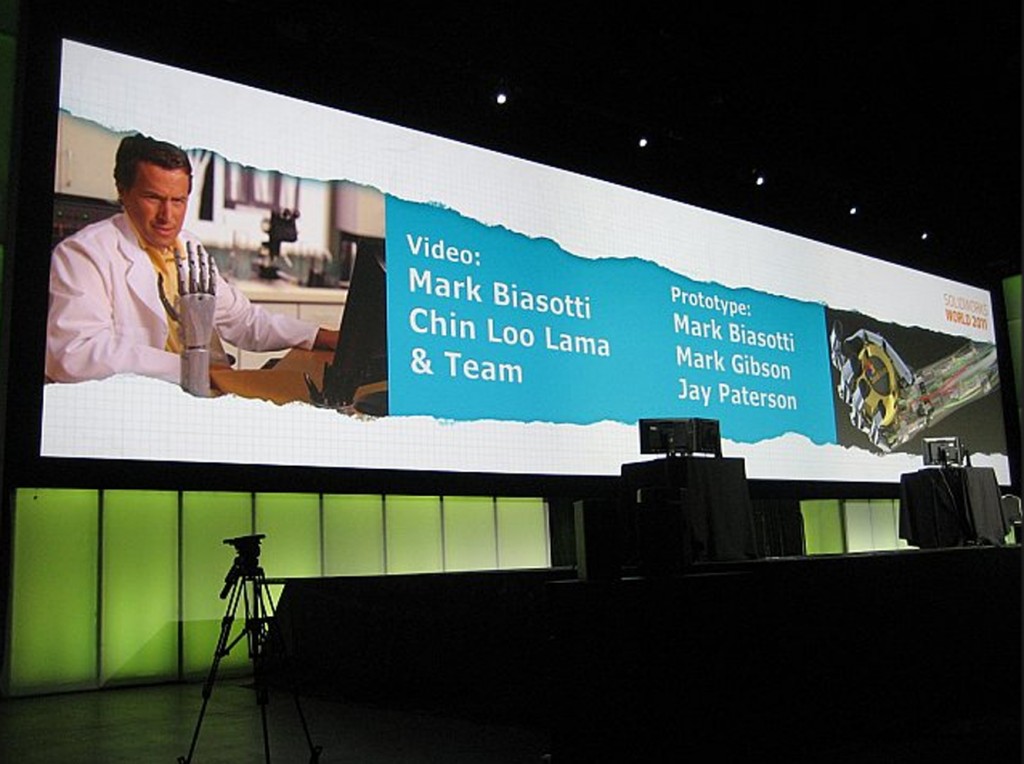
Monday morning general session - Dream to Design Video shown and then Jeff mentions of Robitic Exhibit in Product Showcase
Arm Fabrication
Jan 30
A few pictures of machining parts for the arm:


This part attaches the back of the forearm to the front. Steel piston on air cylinder shaft accepts small flange bolts which constrain the forearm end to the stationary cam.
Final Control Rig Design
Jan 5
I have parts back from QuickCuts-CNC. I’m overall impressed with the quality and service. I’ve dealt exclusively with Todd Hellman. The speed and price of these parts are amazing. I found out from Todd that the process is highly automated (even using robots to choose the raw billets of material) and they must have 5 axis give some of the parts I thrown at them. Currently I’m having the forearm and rest of the controller rig cut. Should have those parts back sometime next week. In the meantime, I have all my hardware from McMaster and I’m going to be busy assembling the hand portion of the rig.
All of this hard work hopefully will culminate in an interactive display exhibition at SolidWorks World 2011 in San Antonio Texas. Below is the latest rendering of what we think it will look like. The participant will be seated at a simple, height-adjustable stool (added benefit here is that it can be wheelchair accessible) and the participant will strap their hand into a controller rig. Once in, they can then fully control the robotic hand in the plexiglass display remotely. We think the “tele-presence” activity will be compelling and that the user will experience force feedback remotely thru the rig. We hope that the exhibit will teach participants and observers at many levels – from robotics, to hydraulics and the dynamics of remotely operated systems.
We’ve assembled the machined parts into a working finger!
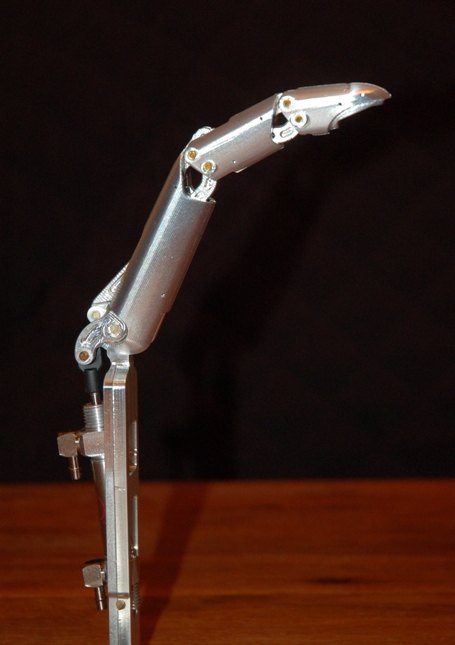
Good points:
- It works! The finger moves as expected and there aren’t any interferences as the finger moves through its motion.
- All holes are aligned, surfaces align perfectly, and threads all work smoothly with the hardware we purchased.
- The mounting of the cylinder, though tight, seems to work well just as it is. We were considering building a tiny elastic mount, but this may not be necessary.
Things we’ll want to improve:
- It appears that I’ll need to use more careful fixturing, as the thickness of certain areas is incorrect. (This corresponds to the “Z” direction on the milling machine.) I think this has to do with machining different depths of the various parts in different operations with different tools.
- The parts appear to have a lot of “slop”. There’s an axial component of this is which is caused by the machining issues mentioned above. However, there is also about 0.004″ clearance designed in between the pins and their holes. Given that the pins are only 0.094″, this results in a sizable amount of clearance.
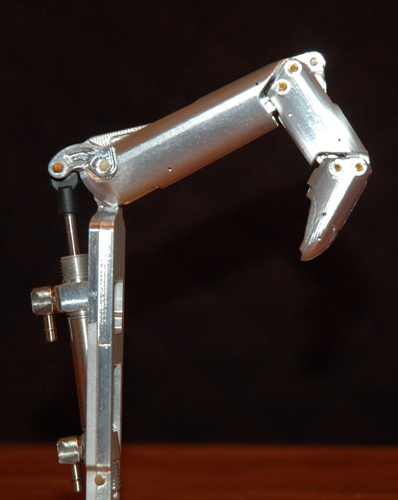
Controller Rig Refinement
Nov 14
Over the last two weeks I have been refining the controller rig concept and I’m currently getting RP parts made for the entire hand area while I continue down the arm. Early prototype parts and assembly look promising. The big question (and toughest area to design) is the thumb area, in particular the thumb’s “pivot”
Finger Parts Machined
Nov 2
Today I finished machining the “curvy” parts of the middle finger.
Most of the visible parts of each finger are designed in halves, and each half is machined from two sides.
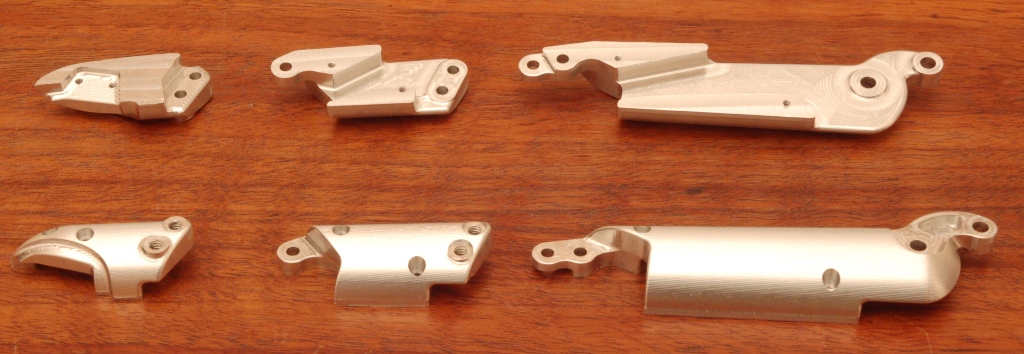
Finger parts are machined in halves. Top row is placed to display interior detail, bottom row shows outer surface.
In the picture above, the top row of parts show their internal detail, which is mostly 2.5D (planar surfaces at various depths). By contrast, the outsides of the finger parts are sculpted 3D surfaces. The latter are trickier to machine due to the fact that no single tool can match the constantly-changing curvature of the surfaces. As a result, various “strategies” have been devised for moving a ball-nose end mill over the surface to create the most accurate result. For these parts, I used the Parallel strategy for the areas closer to horizontal, and the Contour strategy for the areas closer to vertical. A Horizontal pass was also taken for the screw lands, bearing faces, and other true horizontal surfaces.





